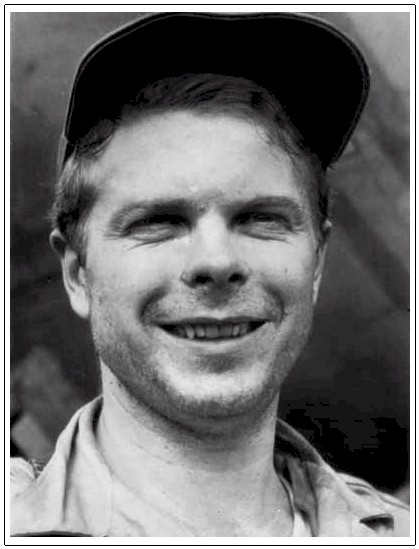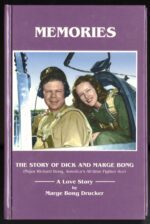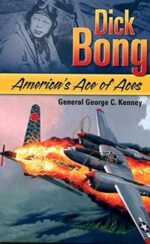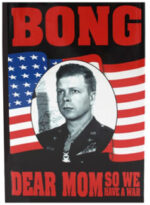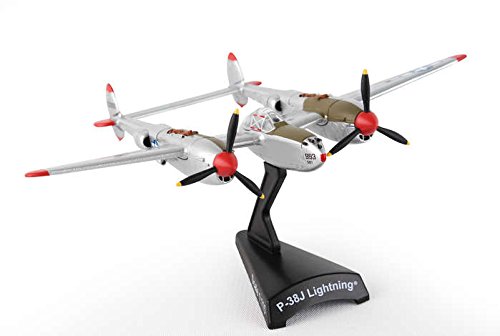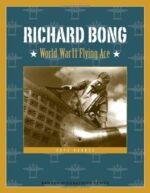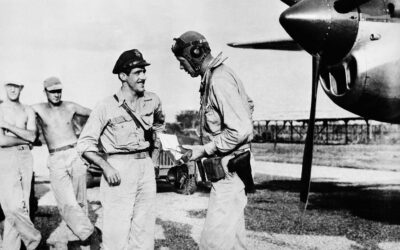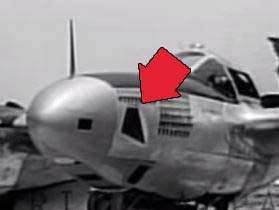America’s “Ace of Aces”
24 SEP 1920 / 6 AUG 1945
People have asked us on occasion why we chose this picture of Dick Bong to highlight the page, rather than the more famous one of him sitting in the cockpit of his P‑38.
That’s an easy one…we wanted to let everyone know just how young this hero was when he did all of those amazing things. This image reflects that perfectly.
And how young he was when he died.
Medals and Decorations
With 40 aerial victories, this Wisconsin farm boy became America’s top ace, only to die in a tragic P-80 crash at home. While in the war, he was the one to beat…but nobody ever did. The pilot who came closest, Tommy McGuire, died on the mission where he might have tied Bong’s record. Of course, then Bong probably would have insisted on going back up again to give it another go!
Medal of Honor
Distinguished Service Cross
Silver Star (1 OLC)
Distinguished Flying Cross (6 OLC)
Air Medal (14 OLC)
American Campaign Medal
American Defense Service Medal
Distinguished Unit Citation (1 OLC)
Asiatic-Pacific Campaign Medal (1 Silver Service Star)
Philippine Liberation Medal
World War II Victory Medal
Australian Distinguished Flying Cross
About Marge Bong
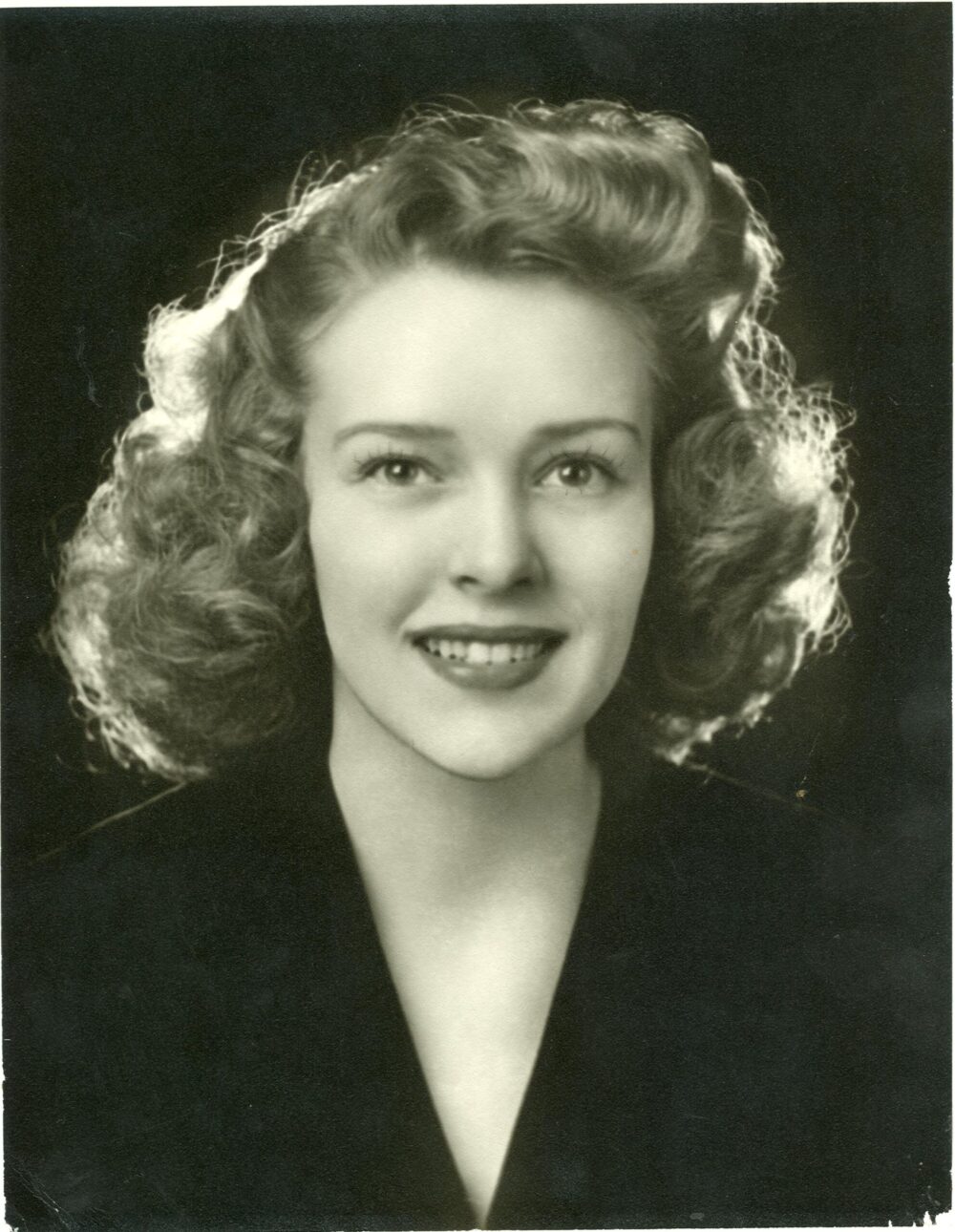
The Beautiful “Marge”
Dick Bong’s P-38 Namesake
The Richard and Marge love story is one for the ages. If you’d like to read about it, you can pick up a copy (called Memories) here.
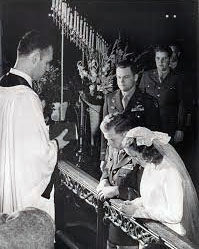
The Bongs take their vows
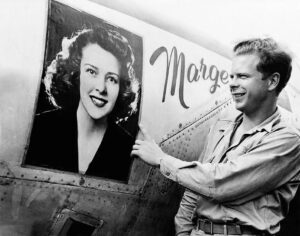
Richard Bong prouddly displays
his beloved P-38 “Marge”
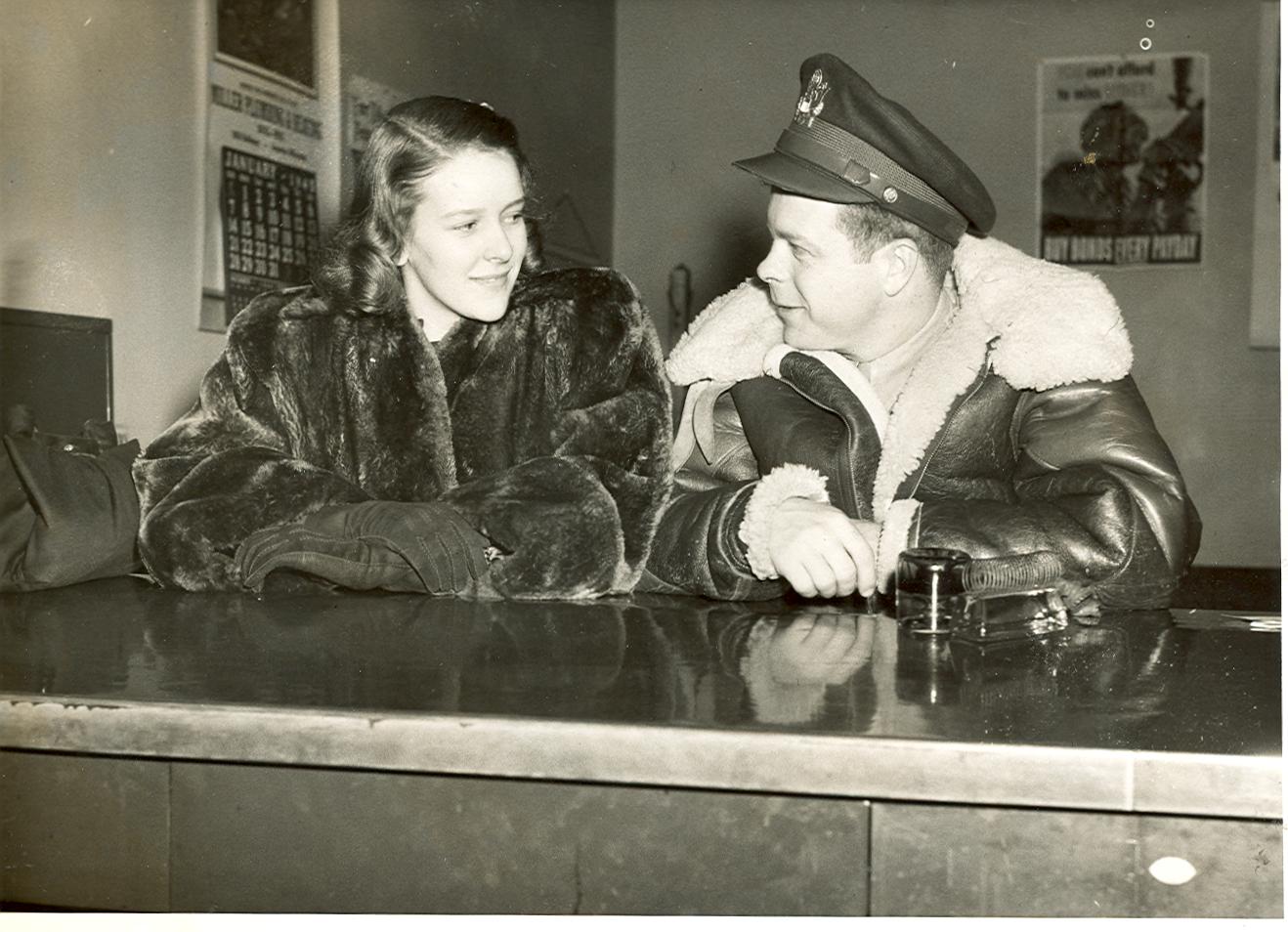
Dick and Marge Bong enjoying a quiet moment together
Born Marjorie Vattendahl in Grand Forks, ND, Marge grew up in Superior, WI. She was teaching art at Superior Teachers College in late 1943 when she met Bong, who had been drafted while on home leave to crown the college’s new homecoming king. As the past year’s homecoming queen, Marge joined him on stage. She and Bong had their first date a few days later.
Marge, a tall, dark-haired beauty, became a national celebrity in 1944 when Bong proclaimed his love by plastering her picture on the nose of his P-38. He explained that she “looks swell, and a hell of a lot better than these naked women painted on most of the airplanes.” For the quiet and reserved Bong to so publicly advertise his feelings “really astonished everybody,” said Christabel Grant, executive director of the Richard I. Bong World War II Heritage Center in Superior.
In January 1945, after his final mission, Bong was sent home for good and married Marge on February 10, 1945 in a ceremony attended by 1,200 guests and the international press.
That P-38 subsequently gained worldwide fame as the “Marge,” and his wife became what Bong teasingly referred to as “the most shot-after girl in the South Pacific.” Bong’s P‑38, Marge, was the most well-known of all Lightnings during the war and remains so today, with the possible exception of Glacier Girl.
*Exerpted from a Los Angeles Times article written by Elaine Woo on OCT. 10, 2003.
Bong Merchandise
Biography
Richard Ira Bong, who would become America’s “Ace of Aces,” was born on September 24, 1920, the son of a Swedish immigrant.
He grew up on a farm near the small town of Poplar, Wisconsin. Dick did well in high school, helped on the farm, and pursued many interests as a teenager.
He played on the school’s baseball, basketball and hockey teams; played clarinet in the school band; sang in the church choir; and enjoyed fishing and hunting.
Like many boys of his era, he became interested in aviation at a young age, and was an avid model builder. He started at Superior State Teachers College in 1938, where he enrolled in the Civilian Pilot training program, also taking private flying lessons.
In 1941, he enlisted in the Army Air Corps Aviation Cadet Program. He did his primary flight training at Rankin Aeronautical Academy in California in June 1941, and completed Basic at Gardner Field, California.
He then went to Luke Field near Phoenix, Arizona, for Advanced Training in single-engine (fighter) planes, where he learned to master the AT-6 under Captain Barry Goldwater.
In January of 1942, just after Pearl Harbor, Dick earned his Army Air Corps commission and his coveted pilot’s wings. After a few months he got the chance to train in Lockheed’s big new fighter, the P-38.
While mastering the twin-engine craft at Hamilton Field, San Francisco, he first attracted the attention of General George Kenney, his future mentor and head of the Fifth Air Force. When General Kenney went to the Pacific in September, 1942, Bong was one of the pilots he tapped to join the 49th Fighter Group.
Second Lieutenant Bong was assigned to the 9th Fighter Squadron, the “Flying Knights,” and was sent to Australia to “hurry up and wait.” While waiting for P-38s to be delivered, Bong flew with Captain Thomas Lynch, 39th FS of the 35th FG, operating out of Port Moresby, New Guinea.
On December 27, 1942, while flying with the 35th, Bong scored his first aerial victories, a Zero and an Oscar; for this he earned a Silver Star.
Bong’s “kills” were evenly spread out throughout his time flying combat. Although most of Bong’s victories were in the earlier stages of the war against very experienced Japanese pilots, Bong was considered extremely lucky in finding the enemy. Some pilots hardly saw any enemy fighters in all their time flying combat.
General Kenney took him out of action again and promoted him to Major.
Bong returned to the Southwest Pacific on September 10, reporting to Gen. Kenney at Hollandia. Bong’s latest HQ assignment was advanced gunnery instructor, and while allowed to go on combat missions, he had orders to only defend himself, and not seek out the enemy.
Kenney decided over 200 missions and over 500 combat hours were enough for any individual. So for Bong’s safety he was finally grounded and ordered home in December 1944. General Kenney (his overall CO) later wrote Major Bong’s biography. Following his decorated career in the US Army Air Forces, Bong became a test pilot.
In an unfortunate coincidence of historic events, on August 6, 1945, while half a world away the Enola Gay was dropping the bomb on Hiroshima, Bong stepped into an airplane for the last time. The P-80 he was testing had the primary fuel pump malfunction just after take-off, and while he ejected he was just too close to the ground for his parachute to open. He didn’t survive.
After living through two years of dangerous combat flying, Richard Ira Bong met his tragic end while on a routine acceptance flight at the young age of 24. Marge learned of her husband’s death while listening to the radio at their Burbank apartment.
Bong’s funeral was held in the same church where he and Marge had been married a few short months earlier. There were thousands of mourners, and the streets were lined with many more bereaved people along the 20-mile route of the funeral cortege. Bong was buried in the family plot at Poplar Cemetery.
Be sure to visit the Richard I. Bong Veteran’s Historical Center website for more great photos and information.
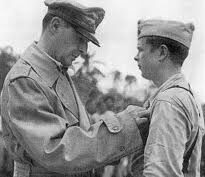
Bong receiving Medal of Honor medal from Gen. MacArthur
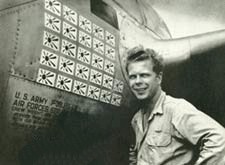
Dick Bong with hisP-38, showing his victories
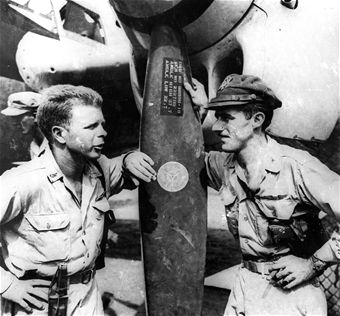
Bong & McGuire
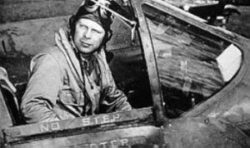
Bong in his P-38

Bong’s funeral.

